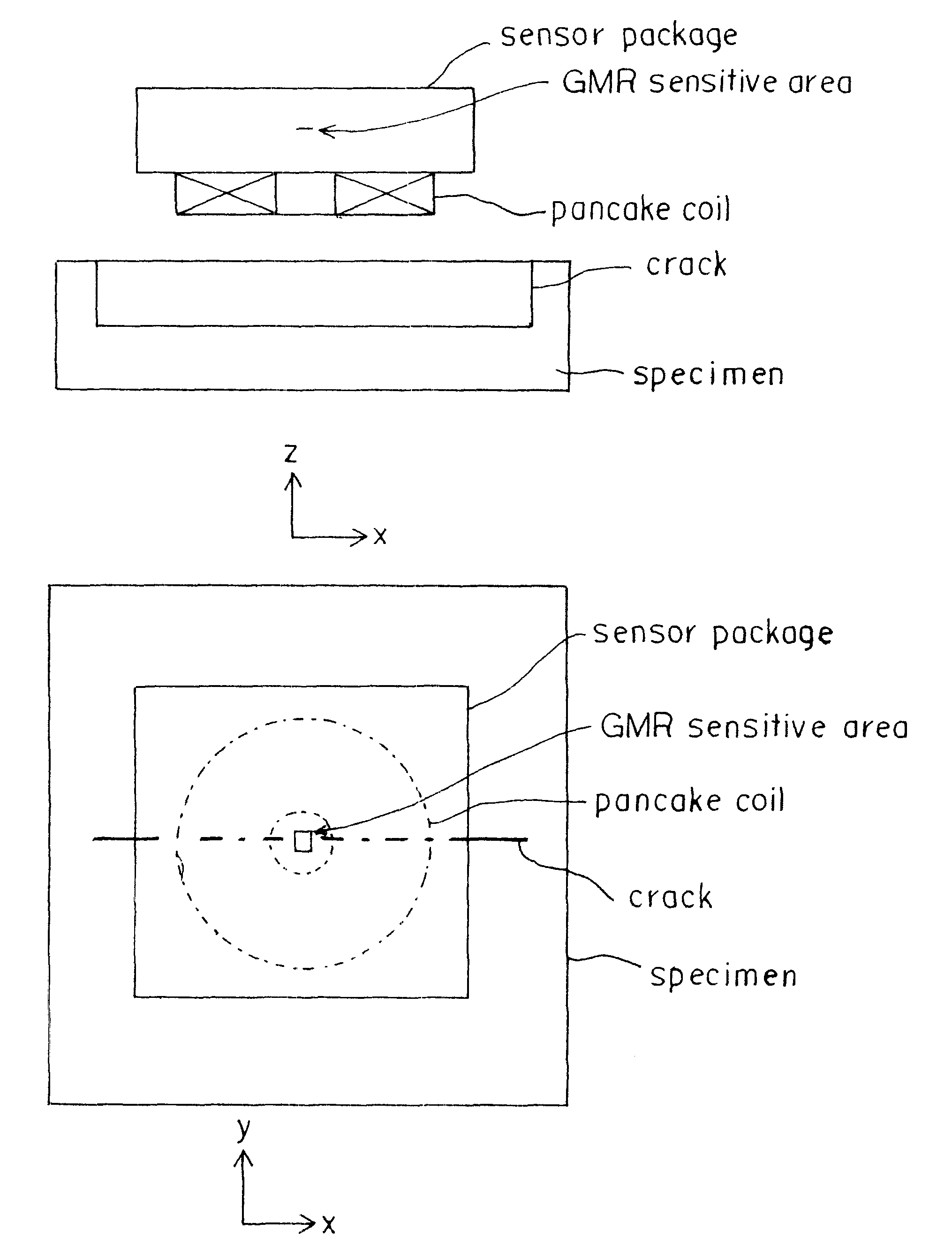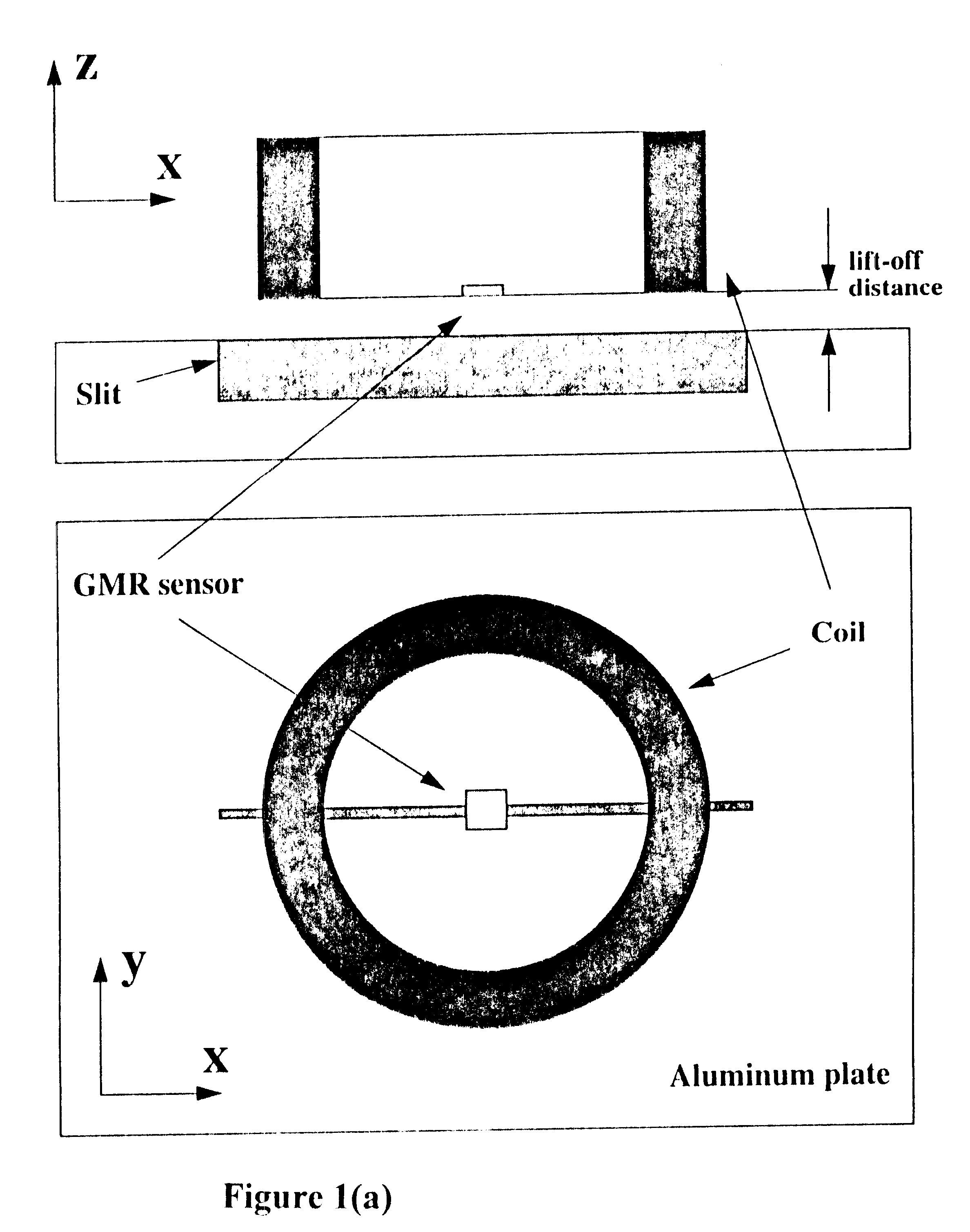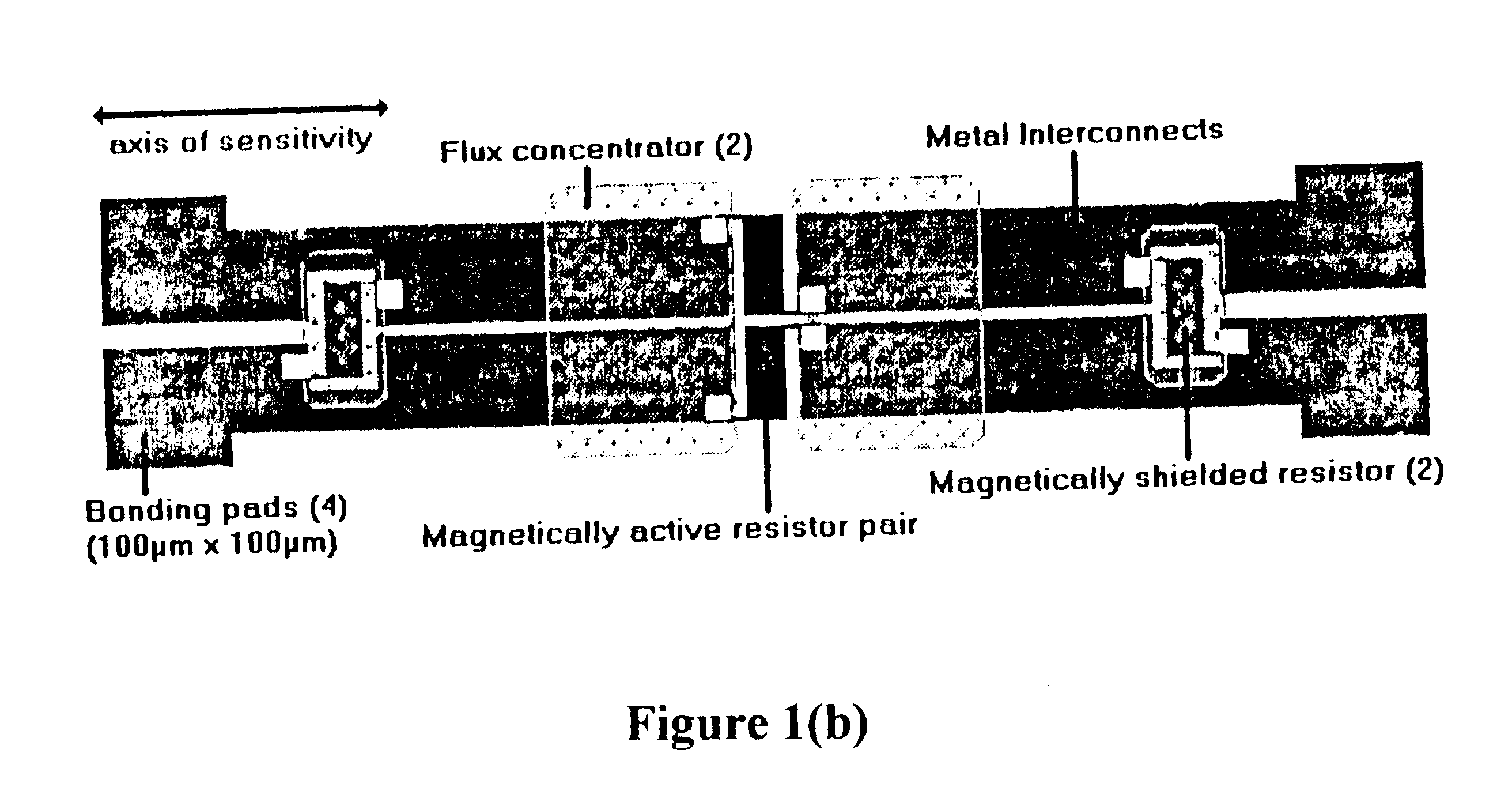Sensor for eddy current testing and method of use thereof
- Summary
- Abstract
- Description
- Claims
- Application Information
AI Technical Summary
Benefits of technology
Problems solved by technology
Method used
Image
Examples
Embodiment Construction
The present invention herein is a giant magnetoresistive (GMR) based eddy current sensor. GMR based eddy current probes according to the invention herein are able to accurately detect flaws in conductive materials. Crack reconstruction is also possible by using results obtained with the GMR based eddy current probe of the invention. The uni-polarity of the GMR sensor leads to a simplified signal conditioning circuit. The tiny dimensions of the sensors of the invention, and the extremely high sensitivity (260 mV mT.sup.-1) to low magnetic field over a broad frequency range (up to 1 MHz) of the GMR based eddy current sensor enhance its spatial resolution.
In particular, the use of the GMR sensor of the invention provides an attractive alternative for ECT sensing for crack detection. The high sensitivity to low fields makes this kind of sensor suitable for the measurement of relatively small field perturbations due to the presence of the crack. Other characteristics of the GMR sensor th...
PUM
 Login to View More
Login to View More Abstract
Description
Claims
Application Information
 Login to View More
Login to View More - R&D
- Intellectual Property
- Life Sciences
- Materials
- Tech Scout
- Unparalleled Data Quality
- Higher Quality Content
- 60% Fewer Hallucinations
Browse by: Latest US Patents, China's latest patents, Technical Efficacy Thesaurus, Application Domain, Technology Topic, Popular Technical Reports.
© 2025 PatSnap. All rights reserved.Legal|Privacy policy|Modern Slavery Act Transparency Statement|Sitemap|About US| Contact US: help@patsnap.com



